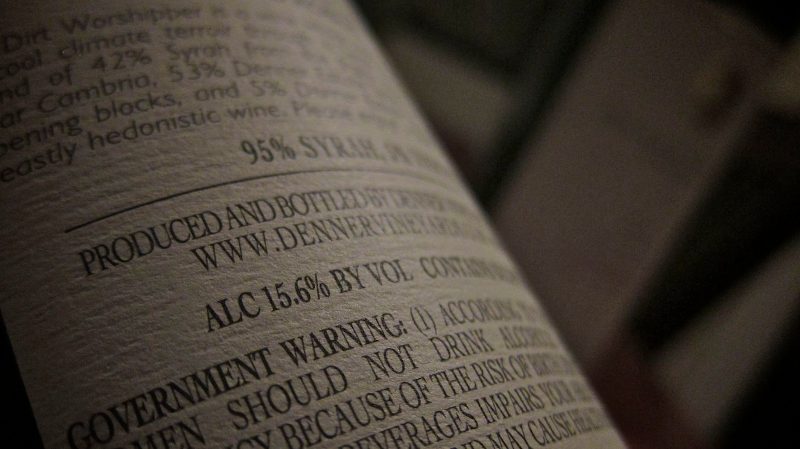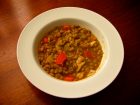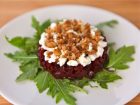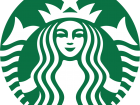It hit me some years ago when while tasting and reading a bottle of Turley Zinfandel. I nearly dropped the bottle when I realized the alcohol level recorded on the label indicated 17%. That’s nearly port, I thought. Since then the alcohol levels of wines beyond zinfandel have been steadily climbing. So much so that some restaurants and collectors are refusing to offer or consider tasting wines with alcohol levels higher than 15%.
To be sure, some wines at 15 to 16% are very balanced and where I would never guess the alcohol percentage to be so high. Others scream at me “hot”. And that’s offensive. I found a California cabernet sauvignon recently to be listed at 16%. The actual alcohol percentage could be much higher. Ask any winemaker. It’s an ongoing joke that the alcohol level, which must be reported to the ATF (Alcohol, Tobacco and Firearms) authorities is often random and nary close to reality.
Call the fire department, Denner Vineyard’s Dirt Worshipper clocks in at 15.6% alcohol, it’s actually probably closer to 17%!
Why? Because for wines over 14% the authorities permit a tolerance of 1% over or under what’s actually printed on the label. For wines under 14% an even greater latitude is allowed—1.5%. That’s why you’ll see many wines labeled “alcohol 12.5% by volume”— that wine could actually be 14%! To be sure, it is virtually impossible to accurately pinpoint the final alcohol content before bottling, and wine labels are printed well in advance of bottling. Most wines are stored months, or even years before release. During this “aging” period evaporation is likely to occur. So what is the alcohol level of the wine you’re drinking tonight? Don’t rely on the label. It’s likely 1-1.5% or more higher. Most wineries use equipment that is either imprecise (vinometer) or expensive (ebulliometer) to measure wine.
 As climate change (or global warming) wreaks havoc on farming, the hot climates of Paso Robles, Australia and southern Spain (Priorat) and elsewhere bring about extremely ripe fruit and with it, high levels of sugar. This in turn translates to high alcohol. In the past, winemakers eager to charm and seduce the critics, especially Robert Parker who tends to lean toward heavy, extracted and high alcohol wines, keep pushing sugar levels and use other techniques in an effort to get a high rating. High rating means higher prices and quick turnover in inventory.
As climate change (or global warming) wreaks havoc on farming, the hot climates of Paso Robles, Australia and southern Spain (Priorat) and elsewhere bring about extremely ripe fruit and with it, high levels of sugar. This in turn translates to high alcohol. In the past, winemakers eager to charm and seduce the critics, especially Robert Parker who tends to lean toward heavy, extracted and high alcohol wines, keep pushing sugar levels and use other techniques in an effort to get a high rating. High rating means higher prices and quick turnover in inventory.
So it was interesting to note that the anti-alcohol movement now has publications such as Decanter Magazine and The San Francisco Chronicle now making policy to include alcohol level in critical wine reviews.
“It’s not just a question of the alcohol’s impact on the taste of the wine,” writes Adam Lechmere in Decanter Magazine, “There are also health issues at stake, drink-driving limits to consider, and the simple issue of intoxication.”
Check out the photos of a couple random bottles I pulled from my cellar at home. The bottle of 1994 Dalla Valle Cabernet Sauvignon (I know, the cork on this one should be pulled soon) sits at 13.5%. The bottle of the 2008 Denner Vineyards Dirt Worshipper sits at a whopping 15.6%. Even more interesting is that my bottle of Denner received a stellar 97 out of 100 points from the Wine Spectator late last year.
Check out this play-by-play panel discussion at the Word of Pinot Noir wine event held last earlier this year on California’s Central Coast about alcohol levels and balance in Pinot Noir.





